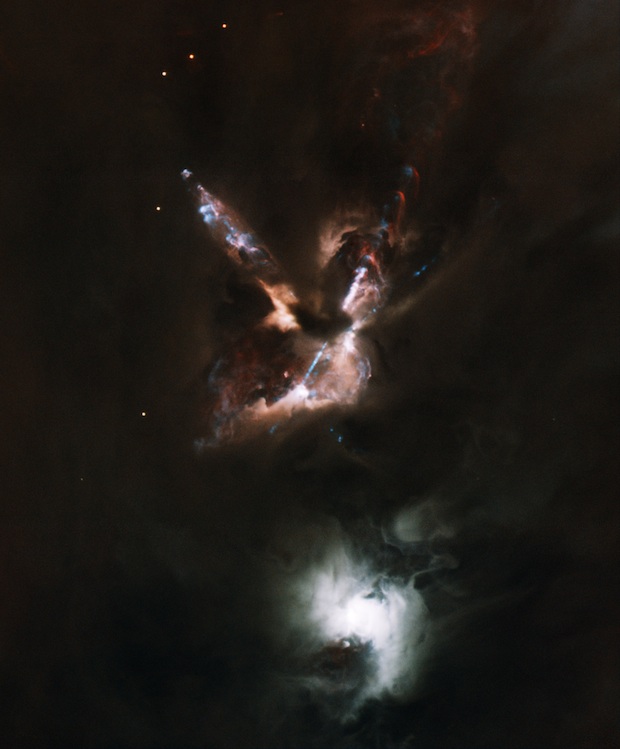Fireworks and orphan stars blast from a stellar nursery
When stars are born in the universe, the process can be a little messy and is often accompanied by plenty of fireworks.
That was definitely the case with this image from the Gemini Observatory, which caught the fascinating structures of a gas jet complex emanating from a stellar nursery at supersonic speeds.
The region, known as the Herbig-Haro 24 (HH 24) complex, contains six jets streaming from a small cluster of young stars embedded in a molecular cloud in the direction of the constellation of Orion.
"This is the highest concentration of jets known anywhere," Principal Investigator Bo Reipurth of the University of Hawaii's Institute for Astronomy (IfA) said. "We also think the very dynamic environment causes some of the lowest mass stars in the area to be expelled, and our Gemini data are supporting that idea."
Located in the Orion B cloud, at a distance of about 400 parsecs, or about 1,300 light-years from our solar system, this region is rich in young stars and has been extensively studied in all types of light, from radio waves to X-rays.
"The Gemini data are the best ever obtained from the ground of this remarkable jet complex and are showing us striking new detail," said co-researcher Colin Aspin, also at the IfA.
Gemini spectroscopy of the hydrogen alpha emission stars also show the existence of early or mid-M dwarfs (very low-mass stars), with at least one of which being a borderline brown dwarf.
The presence of these low-mass stars well outside the star-forming cloud core has scientists scratching their heads, since the gas is far too tenuous for the stars to have formed there. Rather, scientists believe they are orphaned protostars ejected shortly after birth from the nearby star-forming core.
As a result of the ejections, pairs of the remaining stars bind together gravitationally. The dense gas that surrounds the newly formed pairs brake their motion, so they gradually spiral together to form tight binary systems with highly eccentric orbits. And when the orbiting stars get too close to one another, this causes disturbances that lead to an accretion of gas, and an outflow event that we see as supersonic jets.
